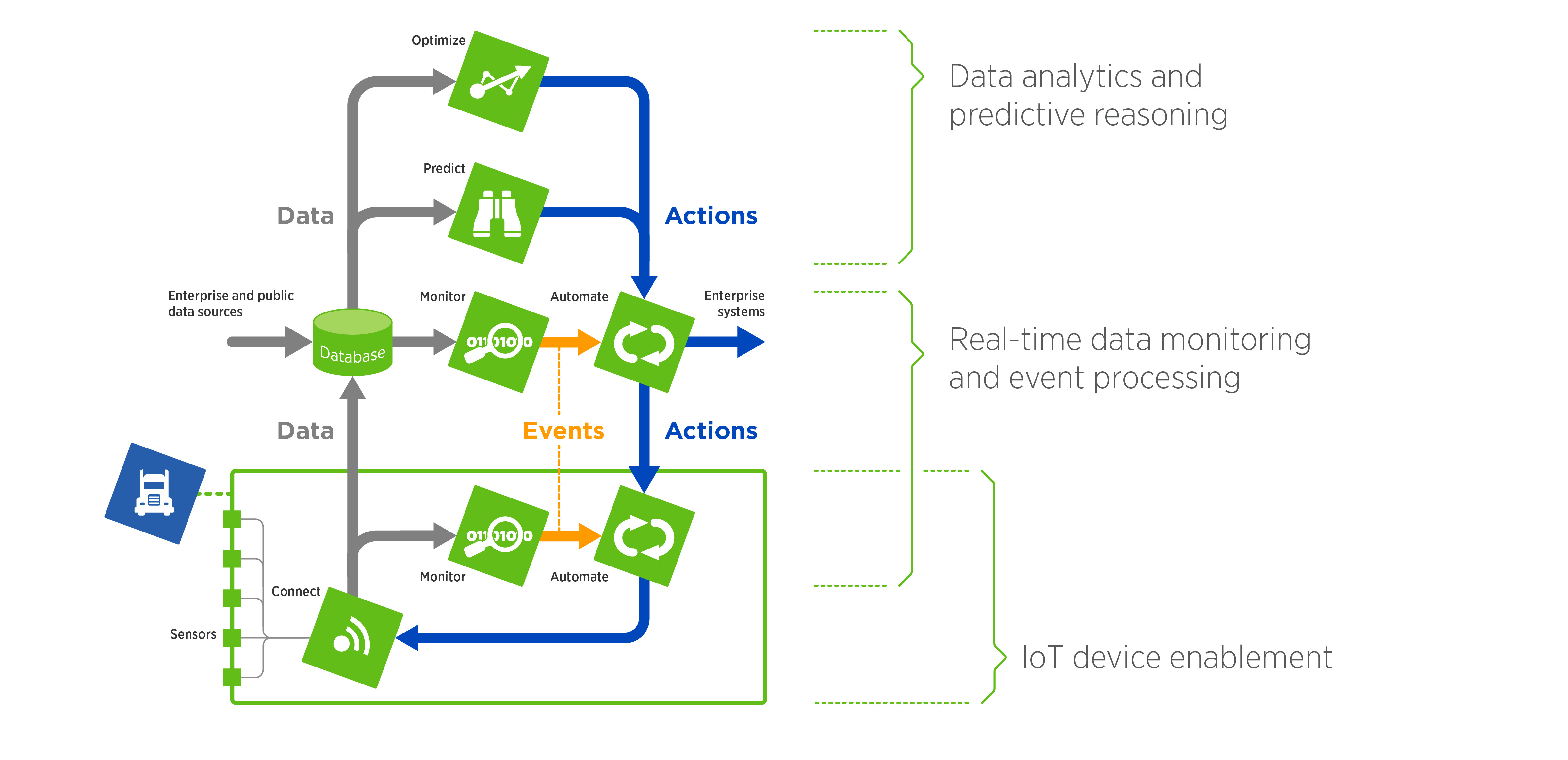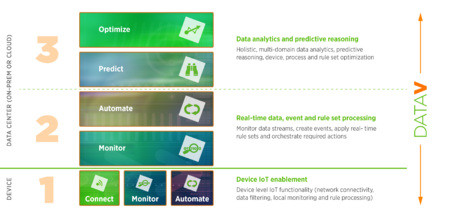A holistic approach to IoT
July 01, 2016

The Internet of Things (IoT) has caught fire and many industries are seeing initial rollouts of these solutions that promise to provide significant va...
The Internet of Things (IoT) has caught fire and many industries are seeing initial rollouts of these solutions that promise to provide significant value to both customer and vendor. The natural reaction is to treat this as a technology initiative, focusing on how best to bring together data from smart, connected devices. And in certain cases, this approach has merit.
Bsquare has a somewhat unique view on IoT – focusing on business value and taking a holistic approach to integrating IoT into existing processes and workflows. The result is a faster rollout, quicker feedback loop, and meaningful business improvements that lower risk associated with new technology adoption.
Holistic IoT approach
Bsquare has been around for 22 years with a traditional core business revolving around embedded integration and deployment of solutions that implement business objectives for Fortune 500 companies. This 22-year history involves all the usual suspects – embedded boards, RTOS, and BSPs, along with embedded control software to run them. Over time these devices have all become connected, and Dave McCarthy, Senior Director of Products at Bsquare, provided an example of the holistic IoT approach.
“One good example of a holistic IoT approach was the Coca Cola Freestyle machine,” Dave said. “132 flavors with a touchscreen user interface that allows you to mix and match your flavors before you fill your glass. This project proceeded like any other networked embedded system solution, but this one went further. Data generated from the machine was being used to understand consumer behavior and optimize the supply chain.”
Dave also mentioned similar projects involving Costa coffee machines – barista quality coffee in a vending machine where Bsquare did the software work, from board to applications. “All of these cases were on a consulting and services basis and we learned that the motivations for IoT extended beyond just extracting and transmitting device data.”
Common functions and use case focus
McCarthy mentioned that one of the values of starting from the consulting space was the emphasis on business use cases. This proved invaluable when Bsquare began to turn attention to an IoT framework and associated system requirements, of which there are three (Figure 1):
- IoT device enablement. Sensors connected to local processing provides data as well as intelligence at the device level, which is key for distributing event information upstream while also accepting a feedback loop of actions in order to respond to business requirements and use cases. Sometimes it’s ok to push data to the cloud, but in many cases this isn’t practical as slow or no connectivity can mean excess network transmission costs associated or additional latency that could be a deal breaker for a real-time control system, for example.
- Real-time monitoring and event processing. This encompasses enterprise and public data sources. With the disparate nature of IoT information, a powerful real-time monitoring and event processing environment enables the most efficient use of all available data sources.
- Analytics. The connections between analytics, automation, and the device can be centralized in an on-premise server or cloud environment, and enables the simplification and distribution of IoT data.
The DataV stack
DataV is a holistic solution that includes all of the aforementioned components with solid architectural separation between the device and data center elements (Figure 2). However, the real-time and data analytics components are architected to be able to be flexibly moved between on-premises and remote cloud environments.
The distributed logic between device and cloud can be divided into a baseline OEM layer that enables customers to write their own rule sets. This gives IoT device manufacturers the ability to differentiate through a flexible architecture that puts information processing where it’s most effective – on the device, on-premise, or in the data center.
The third layer of the stack provides optimized analytics and resulting predictions that feed back into the lower layers for incremental value and optimized intelligence.
IoT is about actionable intelligence
The DataV architecture is about creating a closed loop with actionable intelligence on one end and business objectives on the other. For example, a logistics use case demands constant uptime for delivery trucks, as a truck out of service can’t deliver cargo. Therefore, predictive, rather than reactive, maintenance is preferred.
A Bsquare client already had a solution for collecting telematics data from its trucks, so Bsquare augmented that information with surrounding operational data (such as repair history) with the goal of performing automatic root cause analysis. To drive root cause analysis execution, the solution considered reported error codes, potential fixes based on those codes, as well as additional historical and real-time data that could be used to eliminate a subset of the proposed fixes. Once that process was complete, a probability analysis was performed on the remaining potential fixes, and those findings were then combined with part inventory and technician skill level to dramatically cut diagnostics time, improve the quality of the fix, and lower time to repair. DataV was central to the success of this “aftermarket” IoT deployment.
IoT and retrofits
IoT is fine for new systems, but what about the massive amount of legacy equipment? Smart vending is one such example that Dave described.
“There is a massive amount of fielded equipment not ready for retirement. But there is high value for participation in a connected world,” Dave said. “Bsquare is part of the Intel Internet of Things Solutions Alliance, so we worked with Intel on a hardware solution that can bridge the gap. The board uses Linux and DataV to bridge the basic metrics provided by legacy vending equipment and adds additional sensor information with local monitoring and automation capabilities. This is a great example of enabling IoT without needing to “rip-and-replace” existing equipment.
Summary
IoT is about customer experience and the ability to use technology to monitor, analyze, and automate in order to provide new and better services to those customers. Starting with defined business rules and integrating the technology to move toward improving service can yield tangible results in a way that clearly justifies the investment.
While many solutions are designed to solve a piece of the problem, a holistic approach takes into account all of the necessary components to achieve business use cases so that value can be realized more quickly and with less risk.







